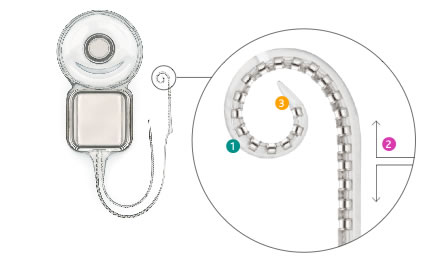 To celebrate Australia Day this week, we’re looking at some of the best inventions to ever come out of our sunburnt country. Today, we pay homage to Graeme Clark, who has dedicated half his life to giving deaf people the gift of hearing through his cochlear implant invention.
To celebrate Australia Day this week, we’re looking at some of the best inventions to ever come out of our sunburnt country. Today, we pay homage to Graeme Clark, who has dedicated half his life to giving deaf people the gift of hearing through his cochlear implant invention.
Back in the late 1700s Count Alessandro Volta, the man who invented the battery, discovered that by applying metal rods in his own ears and connecting them to a 50V circuit, he experienced the sensation of hearing a sound he described as “a kind of crackling, jerking or bubbling as if some dough or thick stuff was boiling”. Fast forward 150 years, and scientists across the world were using that discovery, as well as the recent advances in technology, to try and use electricity to stimulate the auditory nerve to give deaf people the sense of hearing again.
In 1966, Australian doctor Graeme Clark read a paper from an American surgeon who had successfully given a patient hearing sensations using electrical stimulation. Inspired by potentially aiding his hearing impaired father, in 1967 Clark decided to begin his research into trying to develop a technology to give hearing to deaf people.
The road to creating the first Australian cochlear implant lasted 11 years. Clarke was adamant that extensive trials needed to be carried out on animals before experimenting on humans, which could have been driven by the lareg amounts of criticism he received from colleagues during the early stages of his research. Money was also an issue, with the negative criticism towards his studies led to difficulties in getting funds from statutory sources. In 1974, a telethon on channel 0 and Sir Reginald Ansett raised enough funds for a human operation.
In 1978, Clark operated on Rod Saunders, giving him the ability to perceive sound again. Clark was overcome with emotion at the success:
“When the first implant worked on Rod Saunders I was enormously relieved. There had been a build‐up in tension and hard work for years and this was the first step in what was to be a series of further advances. The most moving moment for me however was when he heard speech for the first time. I simply broke down, went into another lab and cried with relief.”
After the first two successful operations, the Federal government got involved and helped fund the project. Clark and his team at the University of Melbourne joined forces with a medical equipment exporter called Nucleus, and together with the government’s research funding, began making and selling the advanced cochlear implants in 1983. in 1985, the implant was given FDA approval in the US as safe for humans, giving thousands of Americans the chance to hear for the first time.
From that point, Clark has continued to lead the way in cochlear implant technology, researching speech therapy so that the deaf could not only hear sounds but understand speech as well. As technology has matured, so too has the implant, becoming smaller and more efficient. The future is equally bright, as Clark’s passion for helping the deaf and hearing impaired continues:
The implant is likely to get smaller and reach a stage where everything will be implanted under the skin, including the microphone. Implants are now being used in conjunction with hearing aids in ears with residual hearing and many already have an implant in each ear. Perhaps the most exciting possibility for the future is the use of nerve growth hormones. They could protect the hearing nerve from dying back in deafness and cause residual nerve fibres to re‐sprout. One day it may be possible to have the whole inner ear restored to normal so that a Bionic Ear may then not even be needed
In 2009, more than 125,000 people around the world had been given the gift of hearing thanks to Clark’s creation. Its impossible to underestimate just how important Clark’s research and creation has been in the lives of so many people all over the world.